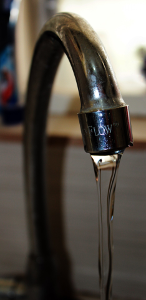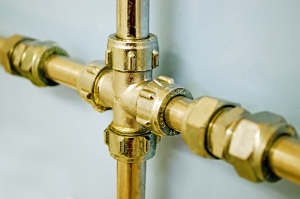 The mission of the Maryland Department of the Environment’s Water Supply Program is to ensure that public drinking water systems provide safe and adequate water to all present and future users in Maryland, and that appropriate usage, planning and conservation policies are implemented for Maryland's water resources. This mission is accomplished through proper planning for water withdrawal, protection of water sources that are used for public water supplies, oversight and enforcement of routine water quality monitoring at public water systems, regular onsite inspections of water systems, and prompt response to water supply emergencies. The Water Supply Program's activities help to ensure safe drinking water for more than 5.7 million Marylanders.
The mission of the Maryland Department of the Environment’s Water Supply Program is to ensure that public drinking water systems provide safe and adequate water to all present and future users in Maryland, and that appropriate usage, planning and conservation policies are implemented for Maryland's water resources. This mission is accomplished through proper planning for water withdrawal, protection of water sources that are used for public water supplies, oversight and enforcement of routine water quality monitoring at public water systems, regular onsite inspections of water systems, and prompt response to water supply emergencies. The Water Supply Program's activities help to ensure safe drinking water for more than 5.7 million Marylanders.
The Department has been following the events in Flint, Michigan. While the Department is confident that its programmatic and regulatory process has numerous safeguards in place that would prevent a situation such as what happened in Flint, the Water Supply Program has reviewed its processes to ensure that adequate safeguards are in place.
The Program is also in the process of surveying all public water systems to update its inventory of systems with lead service pipes. According to the Department’s previous surveys, the two largest water systems in the state, Baltimore City and Washington Suburban Sanitary Commission, do not have lead service lines. Based on those prior surveys, some older towns in Maryland have reported lead service lines, but they are currently not exceeding the U.S. Environmental Protection Agency’s Action Level for lead.
The Department takes a comprehensive approach to the oversight of public water systems. The overall regulatory scheme requires the EPA to establish safe drinking water standards. The EPA researches the potential impacts of a variety of chemicals on human health and establishes what levels can be present in drinking water without causing harm (“Maximum Contaminant Levels”). Using maximum contaminant levels, the Department requires municipal or community systems to construct and operate their drinking water treatment plants in a way that produces water that meets these standards when it leaves the plant.
The Lead and Copper Rule
 In 1991, EPA published the Lead and Copper Rule (LCR), to minimize lead and copper in drinking water. The rule replaced the previous Maximum Contaminant level (MCL) standard of 50 ppb, measured at the entry point to the distribution system, with an Action Level (AL) of 0.015 mg/L for lead and 1.3. mg/L for copper based on 90th percentile level of required compliance monitoring values. The Lead and Copper Rule differs from previous regulations in that it replaced compliance determination based on an MCL with a three-pronged approach to reducing lead and copper levels:
In 1991, EPA published the Lead and Copper Rule (LCR), to minimize lead and copper in drinking water. The rule replaced the previous Maximum Contaminant level (MCL) standard of 50 ppb, measured at the entry point to the distribution system, with an Action Level (AL) of 0.015 mg/L for lead and 1.3. mg/L for copper based on 90th percentile level of required compliance monitoring values. The Lead and Copper Rule differs from previous regulations in that it replaced compliance determination based on an MCL with a three-pronged approach to reducing lead and copper levels:
- Treatment technique requirements, including corrosion control and source water treatment;
- Lead service line replacement program;
- Public Education for lead.
Lead and copper enter drinking water primarily through plumbing materials. Exposure to lead and copper may cause health problems ranging from stomach distress to brain damage. The rule established a maximum contaminant level goal (MCLG) of zero for lead in drinking water and a treatment technique to reduce corrosion of lead and copper within the distribution system. The treatment technique for the rule requires systems to monitor drinking water at customer taps. If lead or copper concentrations exceed in more than 10% of customer taps sampled, the system must undertake a number of additional actions to control corrosion. If the action level for lead is exceeded, the system must inform the public about steps they should take to protect their health including replacement of lead service lines under their control. Exceeding the AL is not considered a violation. The LCR applies to all community water systems (CWS) and non-transient, non-community water systems (NTNCWS). Since 1991 the LCR has undergone various revisions:
Minor Revision of 2000 - On January 12, 2000, EPA published minor revisions to the 1991 Rule making a number of substantial changes including:
-
Requirements that when systems replace lead service lines they are to:
- Replace the portion of the lead service line that they own.
- Notify residents of the potential for temporary increases in lead levels and measures they can take to reduce lead levels if the system replaces only that part of a lead service line that it owns.
- Authority for states to invalidate tap samples under certain circumstances.
- Requirements that systems on reduced monitoring report to the state primacy agency any changes in treatment or the addition of a new water source.
Short Term Revisions - In 2007, EPA revised the Lead and Copper Rule to enhance implementation in the areas of monitoring,
- Required educational statement about lead in drinking water be included in all Consumer Confidence Reports.
- Changed notification of state primacy agency of anticipated changes in treatment or source water that could increase corrosion of lead from simply notification to prior notice and approval.
- Changed definition of monitoring and compliance periods to require all compliance samples be taken within the same calendar year.
- Required water systems above the lead action level to return to standard monitoring if they are on a reduced monitoring schedule.
- Added flexibility and improved the readability of required public education language.
- Expanded public education material delivery strategies to better reach consumers and disseminate information to at-risk populations.
How do I know if my tap water is lead free?
Whether you receive water from a public water system or from your own private well, testing your home's drinking water is the only way to confirm if lead is present. Most water systems, based on their number of customers, test for lead at a certain number of homes within their service area as part of their regulatory water monitoring requirements. These tests provide a system-wide snap shot of whether or not corrosion is being controlled within the distribution system, but do not reflect conditions at every customer taps served by that water system. You may want to test your water if your home has lead pipes (lead is a dull gray metal that is soft enough to be easily scratched with a house key) or your non-plastic plumbing was installed before 1986. See below for more information.
The EPA provides information on testing your home's drinking water for lead and steps you can take if your home tests positive for lead.
Click here for a list of lead and copper forms for testing your CWS or NTNCWS or click here for Monintoring Guildance for Lead and Copper.
For More Information
Please contact the Water Supply Program at WATER.SUPPLY@maryland.gov or 410-537-3702